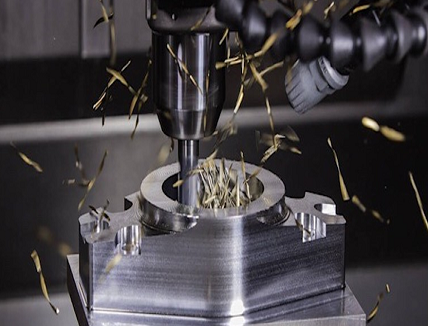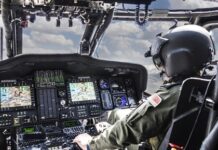
The blade is an important part of the aviation engine. The main function of the blade is to cooperate with the engine cavity to form the continuous change of the cross section and direction of air or gas, and to cooperate with the spindle or turbine disk to realize the high-temperature compression and flammable air flow of the gas generator. At the same time, it can ensure the high-speed flow of gas and convert it into the required aircraft power.
The functional mission and working characteristics of the blade in the engine determine the complexity of blade machining. The leading process adopts advanced manufacturing technology. The difficulty of blade manufacturing lies in its thin-walled parts and poor rigidity, which is more sensitive to the overall rigidity of the tool-fixture-workpiece composition system. The machining of modern engine blades is developing in the direction of high-efficiency CNC machining.
High-efficiency CNC machining is pivotal in ensuring the integrity and efficiency of engine blades. It guarantees high precision, thereby maintaining aerodynamic performance. Moreover, effective manufacturing mitigates any risk of structural weakness or failure, enhancing aviation engines’ safety and operational longevity. Keep reading to learn more about the high-efficiency cutting technology of blade of aviation engines.
Common materials for engine blades
The development trend of aviation blade materials is high performance (lightweight, high strength, high modulus, high toughness, high temperature resistance, oxidation resistance and corrosion resistance, etc.) and low cost. Blade materials from aluminum alloy, stainless steel, titanium alloy to super alloy and new composite materials are constantly developed with the continuous improvement of engine performance requirements.
Titanium alloys are frequently employed in engine blade construction due to their impressive strength-to-weight ratio and resistance to extreme temperatures. Their extraordinary durability and lightness make them ideal for applications demanding high performance with minimal weight. Not only do these alloys stand up to the heat and stress of jet propulsion, but they also resist corrosion, a critical trait in the demanding environment of aviation.
Nickel-based superalloys have also gained prominence for their outstanding ability to withstand high temperatures, which is crucial for parts in close proximity to combustion processes. These superalloys exhibit remarkable mechanical strength and resistance to thermal creep deformation, making them an optimal choice for high-stress, high-heat components like turbine blades. Furthermore, they’re highly resistant to oxidation and corrosion, traits that significantly enhance the longevity and reliability of aircraft engines. Despite their higher cost, the superior performance of these materials in the face of extreme conditions justifies their widespread use in the aviation industry.
Characteristics of machine tools for machining airborne blades
The surface quality of the blade directly affects the working performance of the blade. The traditional blade machining method is time-consuming and laborious, and the precision is difficult to be guaranteed. High-performance milling services are increasingly used in blade processing, of which imported machine tools account for a large proportion. The characteristics of this kind of machine tools are as follows:
(1) the multi-axis linkage is generally 4-axis or 5-axis linkage, or the control of more axes and compound machining linkage control can be realized on the basis of 5-axis linkage.
(2) High-efficiency NC machining of high-speed spindle blade puts forward a high demands for the spindle of high-performance CNC machine tools. The high-speed spindle combined with high-performance tool system can realize efficient cutting of blade.
(3) under the condition of high speed machining, the feed system with high dynamic response not only requires high spindle speed, but also puts forward high requirements for feeding shaft speed, acceleration and deceleration, which ensures that the machine tool has fast response ability.
(4) High stiffness, high precision spindle system, feed system and machine tool structure should have good static stiffness, dynamic stiffness and thermal stability.
(5) Intelligent: machine tool control and machining process.
(6) Precision Adaptability: The ability to integrate a CNC plasma cutter enhances the versatility of the machine, enabling precise contouring of complex blade structures, thereby fortifying the innovation in the aviation industry.
At present, cemented carbide tools are mainly used for blade machining. Compared with foreign enterprises, there is still a gap between domestic machine tool enterprises and foreign enterprises in terms of technical level and industrialization. If the domestic machine tool enterprises want to make a breakthrough in the aerospace field, they also need to strengthen technological innovation, improve the stability of product quality, further improve the technical service system, and enhance the core competitiveness.
Efficient cutting strategy of blade of aviation engine
The material, structure and process characteristics of aviation engine blades put forward higher requirements for processing quality, efficiency, cost and so on. Efficient cutting is to make a concrete analysis of the characteristics of the process system of “machine tool-part-tool-fixture”, tool path, NC programming, cutting parameters, etc., in the process of NC machining. the cutting parameters such as tool type, tool structure, clamping scheme, tool shaft inclination angle and cutting parameters such as cutting depth, cutting speed and feed are comprehensively optimized. Finally, high quality, high efficiency, low cost and green NC machining are realized.

(1) the reasonable selection of efficient tool involves many aspects, such as tool material, tool coating technology, tool structure design and optimization, tool matching technology and so on. The selection of cutting tools should not only adapt to the condition of equipment, but also take into account the characteristics of blades and difficult-to-machining materials, and realize efficient cutting at the same time. The selection of appropriate tool material is the key, and the selection of reasonable geometric parameters of the tool is the key. Under the condition that the process characteristics permit, the cutter with large arc radius of the tool tip is used for high-speed milling as far as possible. The cutting tools that match the blade materials and machining conditions are reasonably selected in the machining.
(2) the scientific selection of cutting parameters is very important in blade machining. In the high efficiency milling of blades, the cutting depth, spindle speed and feed per tooth are given scientifically according to the effective diameter of the tool. The feed speed is calculated according to the feed rate per tooth and the speed of the spindle. When using ball-end milling cutter, if the axial milling depth is less than the tool radius, the effective diameter will be smaller than the nominal diameter of the milling cutter, and the effective speed will be less than the nominal speed, which will also occur when the circular arc milling cutter is used for shallow cutting. When optimizing the machining parameters, it should be selected according to the effective milling speed.
(3) the reasonable formulation of the machining plan and the optimization of the cutter path to select the rough milling of the blade surface is to remove a large margin and leave a uniform machining margin for finishing, and the rough milling should ensure a higher material removal rate. For example, the machining center of the five-axis linkage blade has the function of wide line machining, the cylindrical end milling cutter is used when milling the blade, and the milling path is a wide elliptical arc. For milling the same wave crest height or surface quality, the resulting tool path spacing is much larger. Therefore, this kind of processing has high processing efficiency. In the actual machining, the rotary machining mode, that is, spiral milling, which moves from one end to the other in the direction of blade length, has high machining efficiency and precision.
The precision milling of blade surface is to obtain higher shape and position accuracy, and at the same time to make the surface roughness level meet certain requirements. Taking titanium alloy blade as an example, in order to reduce the springback effect of titanium alloy material processing and the influence of tool wear on machining accuracy in large area machining, the tool must be sharp and avoid long-time machining of the same cutter. it leads to the inconsistency in the machining accuracy level of the blade surface, which is helpful to improve the final finishing effect of the profile. The tool library function of the machining center is applied in the machining, the tool can be changed automatically according to the tool life, and the degree of automation of the machining process is improved. Using the on-line measurement function, the measurement program is compiled to realize the effective control of the part machining process and the whole program non-intervention compound machining.

Conclusion
The high-efficiency cutting technology of aviation engine blade is a complex system engineering. We should comprehensively optimize the process factors such as blank state, tool geometric parameters, clamping mode, tool path and cutting parameters. Effective technological measures to reduce machining deformation are taken to eliminate the adverse effects of various process conditions on deformation. At the same time of improving the rigidity of the system, a new type of high efficiency tool is selected to match the mechanical, chemical and physical properties of the parts. Select high-precision dynamic balance tool handle, adjust tool suspension and reduce vibration source. It is also necessary to carry out cutting experiments on the cutting tools used for machining parts, optimize the cutting parameters, improve the metal removal rate, and finally achieve high quality, high efficiency, low cost and green and efficient machining.



















